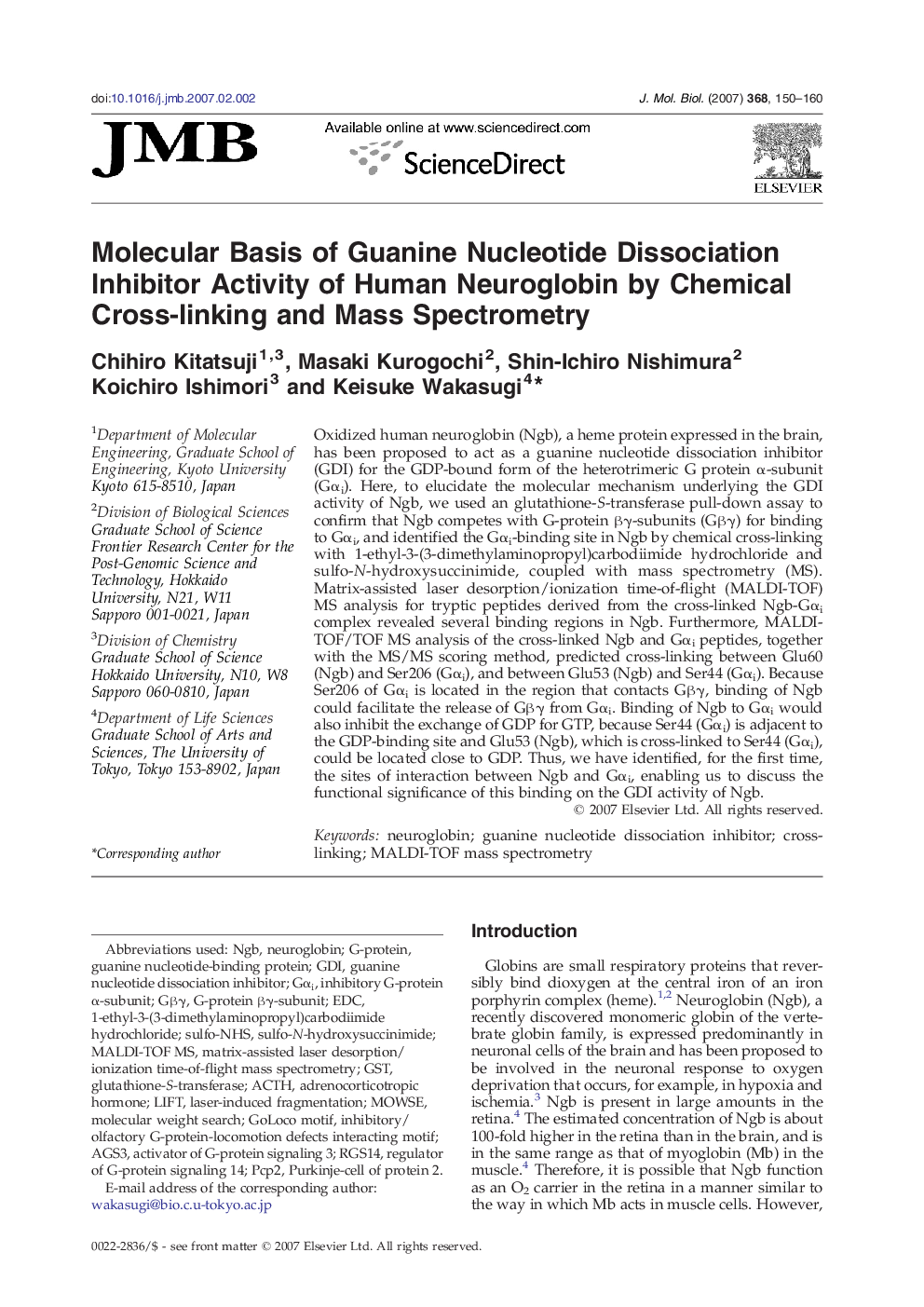| Article ID | Journal | Published Year | Pages | File Type |
|---|---|---|---|---|
| 2188528 | Journal of Molecular Biology | 2007 | 11 Pages |
Oxidized human neuroglobin (Ngb), a heme protein expressed in the brain, has been proposed to act as a guanine nucleotide dissociation inhibitor (GDI) for the GDP-bound form of the heterotrimeric G protein α-subunit (Gαi). Here, to elucidate the molecular mechanism underlying the GDI activity of Ngb, we used an glutathione-S-transferase pull-down assay to confirm that Ngb competes with G-protein βγ-subunits (Gβγ) for binding to Gαi, and identified the Gαi-binding site in Ngb by chemical cross-linking with 1-ethyl-3-(3-dimethylaminopropyl)carbodiimide hydrochloride and sulfo-N-hydroxysuccinimide, coupled with mass spectrometry (MS). Matrix-assisted laser desorption/ionization time-of-flight (MALDI-TOF) MS analysis for tryptic peptides derived from the cross-linked Ngb-Gαi complex revealed several binding regions in Ngb. Furthermore, MALDI-TOF/TOF MS analysis of the cross-linked Ngb and Gαi peptides, together with the MS/MS scoring method, predicted cross-linking between Glu60 (Ngb) and Ser206 (Gαi), and between Glu53 (Ngb) and Ser44 (Gαi). Because Ser206 of Gαi is located in the region that contacts Gβγ, binding of Ngb could facilitate the release of Gβγ from Gαi. Binding of Ngb to Gαi would also inhibit the exchange of GDP for GTP, because Ser44 (Gαi) is adjacent to the GDP-binding site and Glu53 (Ngb), which is cross-linked to Ser44 (Gαi), could be located close to GDP. Thus, we have identified, for the first time, the sites of interaction between Ngb and Gαi, enabling us to discuss the functional significance of this binding on the GDI activity of Ngb.
